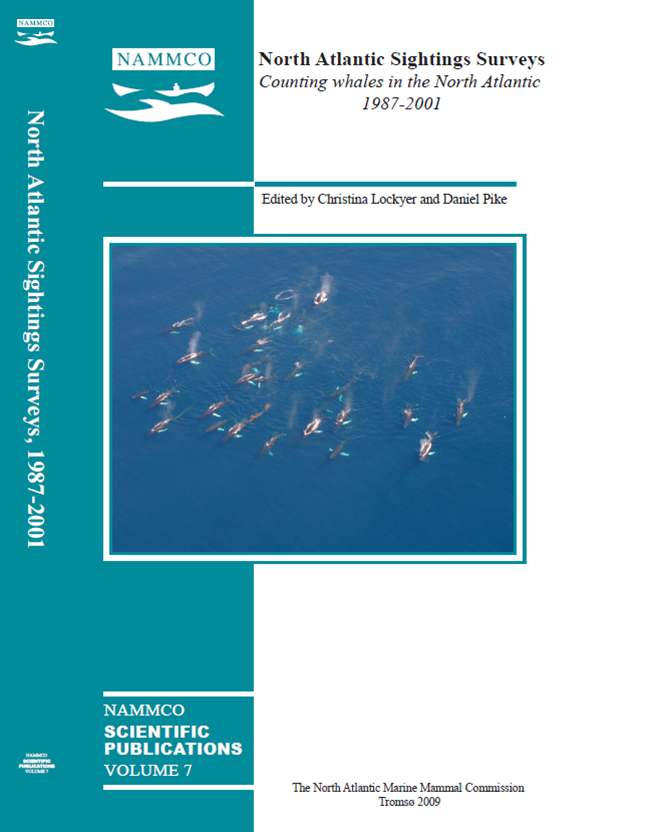Combined line-transect and cue-count estimate of sperm whale abundance in the North Atlantic, from Icelandic NASS-2001 shipboard survey
DOI:
https://doi.org/10.7557/3.2706Keywords:
surveys, sperm whales, Physeter macrocephalus, line-transect, cue, dive behaviourAbstract
Sperm whales (Physeter macrocephalus) pose a particular problem to shipboard surveys as they dive for extended periods and are therefore likely to be missed (not available) even if they are right under the track line. To address these problems the NAMMCO planning committee for the NASS 2001 survey drew up guidelines to be followed when sperm whales were sighted. This required every deep dive to be recorded and considered to be a cue, from which a cue-count estimate is calculated if the cue rate is known. For those whales that did not dive before coming abeam, a conventional line-transect estimate is calculated, which gives an instantaneous surface estimate from which a total estimate can be obtained if the proportion of the time spent at the surface is known. These estimates are compared and combined. Precise dive cycle information is missing for the mostly single all male sperm whales in this area but a preliminary estimate of 11,185 (cv 0.34) is obtained for the surveyed area with an assumed surface time of 20% and two deep dives per hour.Downloads
Published
2009-09-01
How to Cite
Gunnlaugsson, T., Víkingsson, G. A., & Pike, D. G. (2009). Combined line-transect and cue-count estimate of sperm whale abundance in the North Atlantic, from Icelandic NASS-2001 shipboard survey. NAMMCO Scientific Publications, 7, 73–80. https://doi.org/10.7557/3.2706
Issue
Section
Articles





